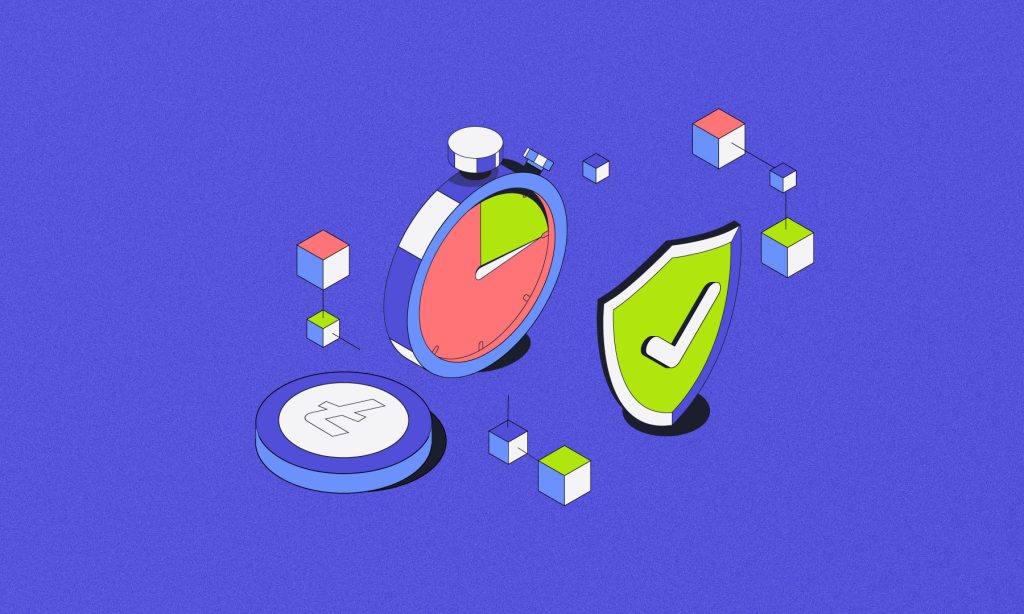Litecoin (LTC) was created from a Bitcoin fork in 2011. It has since earned a great reputation and is widely considered to be dependable. As a mineable peer-to-peer payment system, Litecoin is now known as the “lite version of Bitcoin.”
Read on to learn all about its functionality, how it compares with Bitcoin, its fees, and the speed of transactions.
What is Litecoin?
Litecoin is a crypto that was created by Charlie Lee, a former Google engineer, in 2011. Lee called Litecoin the “silver” to Bitcoin’s “gold.” Today, everyone has come to agree with his assessment. Litecoin now features among the top 10 cryptos globally.
Many developers believed that Bitcoin was firmly controlled by large miners. So, when Litecoin—with its new encryption method—was launched, the hope was that it would make mining accessible to all. While the plan to protect Litecoin from the influence of big miners failed—because enterprises adapted machinery to expand their mining capacity—the coin still grew in popularity.
Bitcoin vs. Litecoin
Despite the shared origin, both cryptos are unique in many aspects, including their cryptographic algorithms and transaction speeds. The list below presents the main differences between them.
Consensus mechanism
Bitcoin and Litecoin use the Proof-of-Work mechanism. But while Litecoin relies on larger memory, because it employs Scrypt for its hashing function, Bitcoin relies on GPU or CPU computing power alone.
Scrypt—a password-based essential derivation function—requires large amounts of memory. It helps to secure Litecoin and is considered more effective than Bitcoin’s SHA-256 algorithm.
Market capitalization
Bitcoin is on top of its game as far as its market cap is concerned. Market cap refers to the value of a company’s shares. In crypto, it represents the value of crypto coins that have been mined. As a cryptocurrency, Bitcoin enjoys dominance and is one of the most utilized coins in the market. In July 2022, Bitcoin’s market cap was approximately $407 billion, compared to Litecoin’s $4 million.
Coin demand and supply
In a crypto market where supply and demand forces determine the prices of coins, Litecoin is at a disadvantage with a lower LTC/USD exchange rate—more the coins, less the price value—than other cryptos. Moreover, a Bitcoin miner can only create 21 million coins, while a Litecoin miner can create 84 million coins.
Transaction speed
Litecoin’s primary advantage over Bitcoin is the speed of transactions. Every crypto network takes time to verify transactions and add them to the blockchain network. Litecoin was designed to solve the weaknesses of Bitcoin and increase transaction speed. Read on for more on this.
How long do Litecoin transactions take?
Litecoin’s transaction processing speed is 2.5 minutes, while Bitcoin takes at least 9 minutes. The fast transaction processing speed has made Litecoin a great alternative to other digital payment methods.
Litecoin’s transaction fees
Litecoin’s fees are lower than those charged by Bitcoin or Ethereum. In ordinary transactions, Litecoin users pay an average of $0.04, which is low compared to Ethereum’s $0.88 and Bitcoin’s $7.6.
Some factors that make Litecoin transactions cheaper are its faster transaction speeds and the incentives it provides miners to help them process transactions faster. Over time, Litecoin’s transaction fees might rise if more users opt for it as an alternative to Bitcoin.
Conclusion
If you are looking to diversify your portfolio, picking an altcoin is one of the ways to go. And Litecoin is one of the most prominent options out there. Its great transaction speed and low transaction fees are a huge draw, but of course, doing your own research is the first step to take if you are considering buying in.
FAQs
How does Litecoin’s blockchain work?
Litecoin’s blockchain operates similarly to Bitcoin’s, utilizing Proof-of-Work to validate transactions and create new blocks. However, it has faster block generation and uses the Scrypt hashing algorithm.
What is Litecoin and how does it differ from Bitcoin?
Litecoin is a cryptocurrency created by Charlie Lee in 2011, based on the Bitcoin protocol. It aims to offer faster transaction processing, with a different hashing algorithm (Scrypt), and a higher maximum supply (84 million coins) compared to Bitcoin’s 21 million.
Is Litecoin a good investment?
Litecoin, involves risk and requires careful consideration. It’s essential to do thorough research and consult with a financial advisor before making any investment decisions.
How can I buy Litecoin?
To buy Litecoin, get a wallet, sign up on an exchange (e.g., CoinSwitch), deposit funds, purchase Litecoin, then withdraw it to your personal wallet. Research and prioritize security.
What are the main use cases of Litecoin?
Litecoin’s main use cases are as a peer-to-peer digital currency for fast and low-cost transactions, a store of value, and a means of transferring value globally with a decentralized blockchain.








